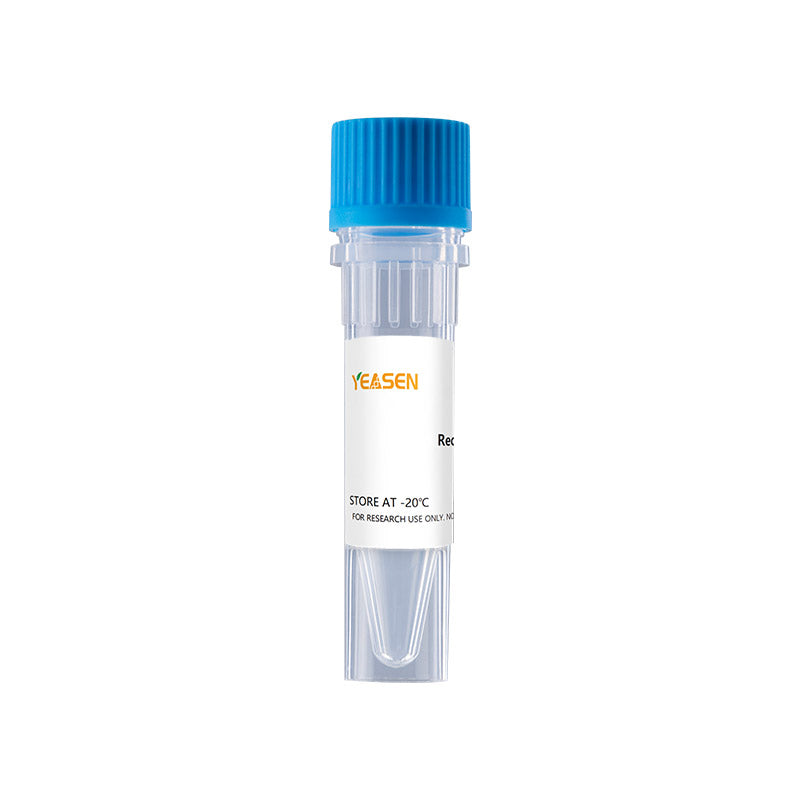Description
Background
BMP-7 is a member of the TGF-β superfamily which is supposed to be one of the most potent anabolic factors of chondrocytes. The growth factor domain of human BMP-7 shares 98% aa sequence identity with mouse and rat BMP-7. BMP-7 plays a role in a variety of organ systems. It promotes new bone formation and nephron development, inhibits the branching of prostate epithelium, and antagonizes epithelial-mesenchymal transition (EMT). Bone morphogenetic protein (BMP) signaling regulates a range of cellular processes and plays an important role in the specification and patterning of the early embryo. BMP-7 expression is known to be protective for renal damage during diabetic nephropathy and disappears early during the progression of diabetic nephropathy. The clinical application of BMP7 is based on its neuroprotective role in stroke animal models.
Product Properties
|
Synonyms |
BMP7, BMP-7, bone morphogenetic protein 7, Eptotermin alfa, OP-1, Osteogenic protein 1 |
|
Accession |
|
|
GeneID |
655 |
|
Source |
E.coli-derived human BMP-7, Ser293-His431. |
|
Molecular Weight |
Approximately 15.7 kDa. |
|
AA Sequence |
STGSKQRSQN RSKTPKNQEA LRMANVAENS SSDQRQACKK HELYVSFRDL GWQDWIIAPE GYAAYYCEGE CAFPLNSYMN ATNHAIVQTL VHFINPETVP KPCCAPTQLN AISVLYFDDS SNVILKKYRN MVVRACGCH |
|
Tag |
None |
|
Physical Appearance |
Sterile Filtered White lyophilized (freeze-dried) powder. |
|
Purity |
>95% by SDS-PAGE and HPLC analyses. |
|
Biological Activity |
Testing in progress |
|
Endotoxin |
< 1.0 EU per 1μg of the protein by the LAL method. |
|
Formulation |
Lyophilized from a 0.2 μm filtered concentrated solution in 30% acetonitrile, 0.1% TFA.. |
|
Reconstitution |
We recommend that this vial be briefly centrifuged prior to opening to bring the contents to the bottom. Reconstitute in 10 mM HAc to a concentration of 0.1-1.0 mg/mL. Stock solutions should be apportioned into working aliquots and stored at ≤ -20°C. Further dilutions should be made in appropriate buffered solutions. |
Shipping and Storage
The products are shipped with ice pack and can be stored at -20 ℃ for 1 year.
1 month, 2 to 8 °C under sterile conditions after reconstitution.
3 months, -20 °C under sterile conditions after reconstitution.
Recommend to aliquot the protein into smaller quantities when first used and avoid repeated freeze-thaw cycles.
Cautions
- Avoid repeated freeze-thaw cycles.
- For your safety and health, please wear lab coats and disposable gloves for operation.
- For research use only.
Payment & Security
Your payment information is processed securely. We do not store credit card details nor have access to your credit card information.
Inquiry
You may also like
FAQ
The product is for research purposes only and is not intended for therapeutic or diagnostic use in humans or animals. Products and content are protected by patents, trademarks, and copyrights owned by Yeasen Biotechnology. Trademark symbols indicate the country of origin, not necessarily registration in all regions.
Certain applications may require additional third-party intellectual property rights.
Yeasen is dedicated to ethical science, believing our research should address critical questions while ensuring safety and ethical standards.

